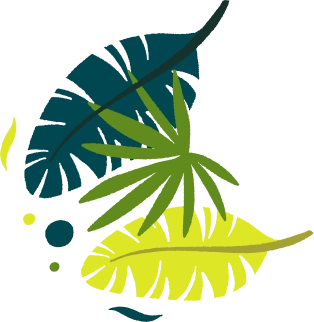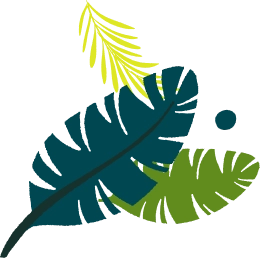


After a relaxing stint in Hue, I hopped on the 3-hour train north to Dong Hoi. Located on the Nhat Le River in Quang Binh province, this coastal city is about 100 miles above Hue (see map below). Dong Hoi is still “off the tourist radar”, which I loved - friendly locals and kids playing by the docks greeted me instead of crowds.
Dong Hoi is the capital of Quảng Bình province, Vietnam (circled), roughly 100 miles north of Hue. This central coastal city has a quiet riverfront charm and is known as the gateway to nearby caves. It’s an easy stop on a south-north Vietnam itinerary.
Within minutes of arriving, I found myself at Nhat Le Beach: 2 kilometers of soft white sand and calm waves right by town. In fact, travel guides list Nhat Le as one of Vietnam’s top beaches. A local blog even noted how the “12 km of white powdery sand” makes a “squeaky” sound underfoot. I rented a bike and pedaled along the shore - the water is warm and shallow, great for a morning dip. Across the river lies Quang Phu Beach (also called Danang Beach locally), backed by fragrant pine trees and ideal for families. A little further, Bao Ninh Beach on the peninsula rewards visitors with peaceful sunsets and equally fine sand - a quieter spot away from town.
Along Dong Hoi’s busy harbor on the Nhat Le River, children play around colorful fishing boats. Strolling the riverbank gave me a front-row seat to local life - fishermen hauling nets, boats moored side by side - exactly the kind of scene travel writers adore. Nhat Le also feeds into hidden gems: for example, the serene Bàu Tró Lake lies just north of the estuary. Legend even claims it has the “cleanest” fresh water in Vietnam, making it a picturesque spot for sunrise photography.
Wandering Dong Hoi’s streets, I discovered layers of history. One of the most photogenic sights is the Tam Tòa Church ruins. Before the war it was a stately stone cathedral; today only the French-built bell tower stands amid weeds and sunset light (see photo). Nearby on the riverbank is Dai Giac Pagoda, an 8,000 m² Buddhist complex built in 2010. It has a nine-story stupa topped by a jade Buddha and even houses Vietnam’s largest Amitabha statue (9m tall, 40 tons) - a peaceful contrast to the ruined church.
Also along the Nhat Le, I found the Monument of Mother Suot. This 7-meter-tall bronze sculpture honors a local heroine who ferried soldiers and civilians across the river during the war. As travelers cruise by, they often stop at her statue with a paddle in hand, reflecting the bravery of Quang Binh’s people. From the same riverfront, just a short walk south is Lũy Thầy - Thầy’s Rampart - a vestige of a 17th-century fortress built by strategist Đào Duy Từ. Today only sections of the old defensive wall remain, but it’s a fascinating spot for anyone interested in military history.
The haunting Tam Tòa Church ruins jut out of Dong Hoi’s green landscape. Once a grand cathedral, it’s now an eerie war memorial. Nearby, Dai Giac Pagoda’s stupa and Mother Suot statue (not pictured) add religious and heroic flavor to the riverbank.
Heading deeper into town, I reached the historic Quảng Bình Gate - the only surviving citadel gate. I watched tourists snap photos by the old brick arch (see below) while locals pointed out that most of the citadel’s star-shaped walls were leveled long ago. Not much is left besides the gate and the moat, but it’s still a great photo op. Dong Hoi’s Ho Chi Minh Square and the Quảng Bình Museum (not far away) are also nice to stroll by if you have time, to round out the city’s heritage tour.
Around sunset I wandered to the ancient citadel gate. Travelers and students often take selfies here by the crumbling brick arch, preserved as a city symbol. Next to it, I found fragments of the old moat and chatted with locals about Lũy Thầy, the 1630s riverside rampart nearby.
Dong Hoi’s food scene is a treat - especially at markets and street stalls. Every morning, Dong Hoi Central Market (near the river) fills with the catch of the day and locals grilling bánh xèo, bánh khoái, bánh lọc, bánh nậm, bánh bèo, bánh rán, cháo canh and more. These Quang Binh specialties are best tried here. The “white rose” dumplings (bánh bao nhỏ - rice flour parcels filled with shrimp or green bean) are famous; I found them irresistible for breakfast. Nearby streets have small stands selling chả cá (grilled fish) and óc (fried snails) for just a dollar or two.
Come evening, the Dong Hoi Night Market on Nguyễn Văn Trỗi (at the river’s foot) buzzes with activity. This food court of stalls (open ~4pm-midnight daily) serves cheap noodle soups, skewers, bánh mì and local sweets - a perfect spot for dinner under the stars. I tried bowls of spicy cháo canh (noodle soup) and grilled cá trắm (river carp) from one stall, and watched kids play tag in the nearby park. Fresh seafood is a must (the quayside restaurants grill shrimp and squid for next to nothing), and you’ll find bánh khoái (crispy pancakes) and chả giò sold on every corner.
Dong Hoi has accommodations for every budget. The top end (five-star riverside resorts) cluster around the Long Bridge, but many travelers recommend the strip along Vo Nguyen Giap Street by the beach - here resorts and guest houses have sea views. For convenience, I actually stayed near the Night Market (Muong Thanh Luxury Nhat Le and Melia Vinpearl Quang Binh are in this area).
On the other hand, backpackers often pick Buffalo Pub & Hostel in town, which has dorms from $3 (they have a bar and common area to meet others). Bicycle rentals are also available here if you want to explore on two wheels.
Flights/Trains: There are direct flights to Dong Hoi from Hanoi and Ho Chi Minh City, plus a convenient airport in town. The Reunification railway stops here, and the trip from Hue is scenic. (We took the train from Hue - so easy and pleasant.) From Hanoi or Danang, it’s about a 9-10 hour overnight bus (you can find sleeper buses and they often stop at the Quang Binh post office in Dong Hoi).
Local transport: The easiest way to get around city and beyond is renting a motorbike (~150,000 VND/day). Taxis (Mai Linh, Tien Sa) and ride-hailing are available too - just insist on using the meter. For trips to Phong Nha Caves (~50 km northwest), take the local bus (about 30,000 VND each way) from the central station or join a tour.
Currency: Vietnam uses the đồng (VND). There are plenty of ATMs around town (Vietcombank, Agribank, etc.) and most hotels accept cards. But bring some cash for markets, small restaurants and the night market.
Language: Vietnamese is the local language. English is not widely spoken (even younger people may only know the basics). Learning a few phrases goes a long way - “xin chào” (hello), “cảm ơn” (thank you), and “bao nhiêu tiền?” (how much) earned me smiles everywhere. A phrasebook or app can help.
Safety: I felt very safe in Dong Hoi. The city is quiet and crime is low. (Travel sites rate it “generally safe” with minimal petty theft.) Still, as in any city, watch your belongings in crowded markets. Be cautious at ATM machines (use well-lit ones), and verify taxi meters. Drinking tap water is not recommended; bottled water is cheap. The locals are friendly and usually very helpful if you get lost or need directions.
Is Dong Hoi worth visiting?
Absolutely. Travel bloggers call it a “hidden gem” with beautiful beaches and a calm atmosphere. It’s often skipped by tourists, so you get an authentic experience. Dong Hoi offers both relaxation (quiet coastal walks) and history (war relics and pagodas) that you won’t find in busier cities.
What are the top attractions in Dong Hoi?
You can’t miss Nhat Le Beach (white sand, free access) and the adjacent sand dunes (try sand sledding for ~80,000 VND). The Tam Tòa Church ruins and Quảng Bình Gate (Citadel Gate) tell the city’s wartime story. Other highlights include Dai Giac Pagoda (large Buddhist complex), the Monument of Mother Suot on the river, and the vibrant Night Market. For scenery, nearby Quang Phu Sand Dunes (for sunset photos) and Bàu Tró Lake (for a serene stroll) are hidden favorites.
How do I get from Dong Hoi to Phong Nha caves?
Phong Nha-Kẻ Bàng National Park (home of Paradise Cave, Phong Nha Cave, etc.) is about 50 km northwest. From Dong Hoi central bus station take the local bus bound for Sơn Trạch (it’s only ~30,000 VND). The bus drops you near the park entrance or village. The ride takes ~1-1.5 hours. Taxis or private car hires are available but more expensive (roughly $25-30 round-trip).
If you have time, I highly recommend you to visit the Duck stop in Phong Nha. I’ve not met a person yet who went to the duck stop and came out not laughing! Do you accept the challenge?
When is the best time to visit Dong Hoi?
The dry season (roughly April to July) is ideal. In particular, April-May is recommended: hot but not overly rainy. July-August are hotter (reaching 40°C) but still dry, good for the beaches. Typhoon season hits from September-November, so there can be heavy rain and flooding. Winters (Dec-Feb) are mild (around 20-25°C), but check forecasts since occasional cold fronts occur. I visited in late spring and had clear skies perfect for the beach.
Where should I stay in Dong Hoi?
The city center near Nguyễn Văn Trỗi (Night Market area) is very convenient, with many hotels and restaurants within walking distance. Muong Thanh Luxury Nhat Le Hotel and Melia Vinpearl Quang Binh are two popular riverside picks. If you prefer the beach, try Vo Nguyen Giap Street where several seaside resorts and budget guesthouses line the coast. For backpackers, Buffalo Hostel is cheap and social (with bikes to rent). Generally, anywhere in town is safe and accessible.
What local foods should I try in Dong Hoi?
Definitely sample bánh lọc (shrimp-pork dumplings) and cháo canh (thick noodle soup with pork or fish) - they’re Quảng Bình specialties. Head to Dong Hoi Market or a morning street vendor for bánh bèo, bánh nậm and bánh xèo. Even the travel blogs highlight the translucent “white rose” dumplings here. Seafood reigns too: try grilled fish, oysters and clams along the beach road, or gỏi cá trắm (carp salad). Don’t miss gà nướng (grilled chicken) with local spicy salt “muối chéo” if you get a chance.
Is Dong Hoi safe for travelers?
Yes. Dong Hoi is quieter and smaller than Vietnam’s big cities, and crime rates are low. Solo travelers - even women - generally feel very safe here. Locals are helpful and not pushy. As always, use common sense: keep an eye on your belongings in touristy spots, and use only licensed taxis with meters. Night travel is okay on lit streets. Street harassment is rare. Overall, I found Dong Hoi to be a very relaxed place to explore.
Get the latest information about our tours and special offers!